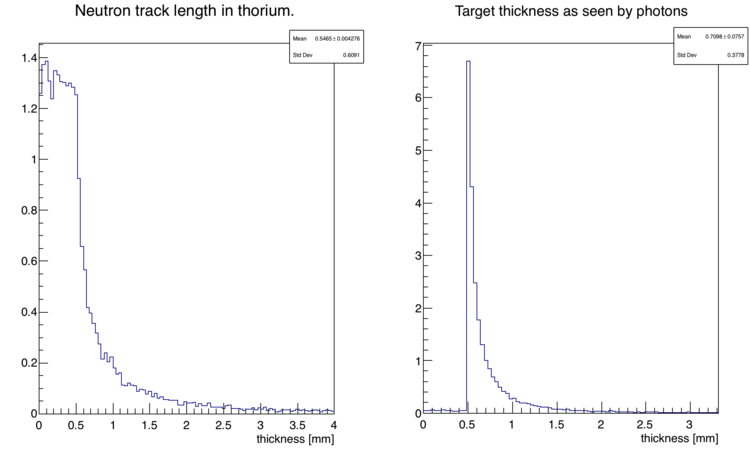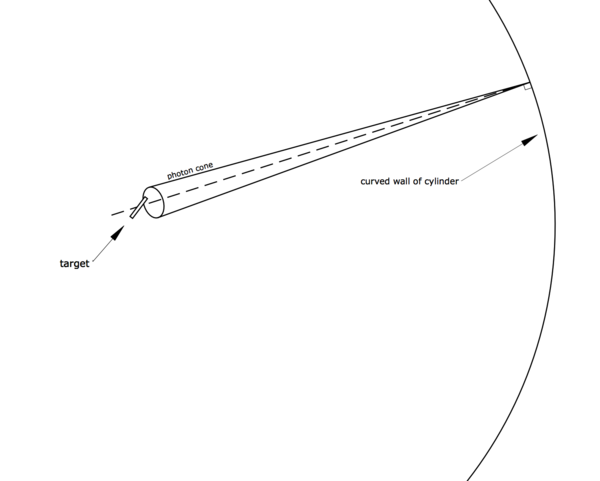Elastic scattering in rotating thorium plate
Overview
11.5 MeV photons are generated uniformly on the curved face of a cylinder with a direction of travel inward and normal to the surface, mimicking a rotating photon source. Enclosed within the cylinder is a cuboid thorium target that is 4 cm high along the cylindrical axis, 0.5 mm thick, and 2 cm wide.
Result
On average, photons see a target thickness of 0.72 mm and neutrons travel though 0.54 mm of thorium before escaping. 2.5% of fission neutrons underwent a scattering event, so statistically, 95% of n-n pairs escape the target unmolested, as shown by the following calculation: .
Details
MCNP cannot directly simulate photons impinging on a rotating target, however, a rotating plane wave of photons is equivalent and can be done with MCNP. This was accomplished by generating photons on the curved surface of a very large cylinder and sending them traveling inward towards the target. However, the photons shouldn't be given a direction of travel exactly along the cylindrical surface normal as this would not be like a rotating plane wave, since photon paths would always intersect with the symmetry axis producing a rotating pencil beam source. Fortunately, MCNP allows the sampling of the angle between the surface normal and the direction of travel. Sampling this angle uniformly in a very small range centered around zero will produce a very good approximation of a plane wave, as long as the cylindrical surface is far from the target. Statistically, this is an infinite number of cone sources like the single one shown below, uniformly distributed over a cylindrical surface.

